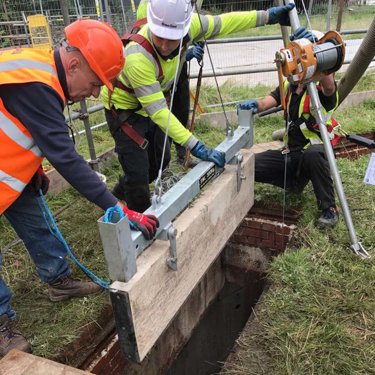Understanding impermeable area studies: A key to addressing urban rainwater management
Published: 6 August 2024
One hour of rainfall on a single property can equate to the daily foul drain usage of 100 houses. This striking comparison underscores the importance of understanding how rainwater from impermeable areas – such as roofs, roads and driveways – enters the foul sewer network. CSO's will inevitably spill during rainfall because of these extra flows. The reality is that this issue often poses a greater challenge than infiltration and is significantly more expensive to resolve.

The impermeable area challenge
Rainwater mismanagement in urban settings leads to substantial challenges for wastewater treatment systems. While some water companies have long conducted impermeable area studies, they often struggle to resolve the issues due to the high costs involved.
Others choose to focus on infiltration instead. However, this approach overlooks that infiltration is driven by groundwater levels and prolonged rainfall, not by single rainfall events, which are more directly linked to impermeable area run-off.
Reducing inefficiencies
Consider a recent impermeable area study of a small industrial estate with no permeable areas like grass. The study revealed that one third of the site’s rainwater entered the foul sewer. This is hugely inefficient as it all must be treated before it can be discharged into the river. This example is just one small area, highlighting the broader scope of the problem. Digitising these plans can streamline the identification and rectification of these issues.
These studies are relatively simple and highly effective, making them a valuable tool for any of the water companies.
Addressing the root cause
Water companies face significant challenges in resolving these issues. Options include installing new surface water sewers, laying new private drains, or constructing large retention tanks - all time-consuming and costly solutions.
When flooding or pollution occurs during rainfall, we check the connectivity of all private and public rainwater pipes and gullies fed from impermeable areas. This involves physically accessing pipework through methods such as dye testing, rodding, CCTV inspections, and sonding.
From identification to rectification
Once misconnections are identified, plans are produced showing how these issues occur. Moving forward, we aim to go further by suggesting rectification measures, such as determining depths and cover levels and identifying nearby storm drains for potential diversion. Colour-coded maps will illustrate the extent of misconnections in a catchment area, with precise square-metre calculations for each, helping prioritise actions.
Strategic deployment of sewer level monitors can enhance this process. These monitors detect flow differences during rainfall, proving the need for impermeable area study work and narrowing down search areas. Incorporating sewer level monitor data into impermeable area studies can greatly improve the accuracy and efficiency.
Ensure a more efficient and sustainable urban drainage system
The issue of rainwater mismanagement through impermeable areas is a critical yet often overlooked problem. While infiltration remains important, addressing rainwater misdirection is crucial for preventing combined sewer overflow discharges and pollution. By conducting thorough impermeable area studies, water companies can identify and rectify these issues, ultimately ensuring a more efficient and sustainable urban drainage system.
Here to help you get the most out of your wastewater networks and assets
Our experts are available to help you understand your underground network, expand hydraulic capacity, and extend the lifespan of your assets.
Speak to our experts

